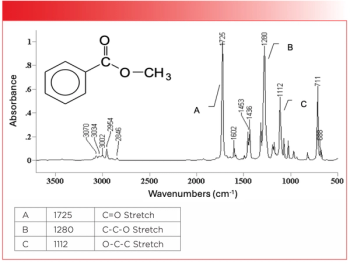
Revealing the Size-Dependent Optoelectronics of N-Type Ultra-High Conductive Polymer PBFDO
A recent study delves into the size-dependent optoelectronics of the N-type ultra-high conductive polymer PBFDO. Researchers explore the absorption spectra, charge transfer modes, and electron transport properties of PBFDO, providing valuable theoretical guidance for its potential applications in nanoscale optoelectronics and device design.
Researchers from Liaoning Petrochemical University in Fushun, China, and Liaoning University in Shenyang, China, have conducted a groundbreaking Raman spectroscopic study on the size-dependent optoelectronics of a remarkable N-type ultra-high conductive polymer called poly(benzodifurandione) (PBFDO) (1). Their findings, published in the Journal Spectrochimica Acta Part A: Molecular and Biomolecular Spectroscopy, reveal the electronic properties and potential applications of this polymer (1).
PBFDO is a polymer with an organic conjugated molecular chain (1). It has a couple important and unique characteristics. For example, it exhibits excellent electrical conductivity and possesses a unique electronic structure (1). In this study, the research team had to conduct a theoretical analysis to gain a better understanding of the electron transport characteristics, charge transfer mechanisms, and the ploymer’s spectroscopic properties (1).
The researchers examined the absorption spectra of both neutral and charged PBFDO polymers of various sizes (1). They identified the dissimilar charge transfer modes associated with the differing absorption peaks by investigating the periodic systems of PBFDO polymers (1). Using a 514-nm laser, the team also examined the Raman and resonance Raman properties of long-chain PBFDO polymers (1).
Geometry and electronic excitation calculations were conducted on the PBFDO polymers (1). The techniques used for this part of the study were density functional theory (DFT) and time-dependent density functional theory (TDDFT) (1). These calculations were carried out using the quantum chemistry program Gaussian 16; the exchange-correlation functions employed were ωB97xd, which were combined with dispersion correction (1). Additionally, a 6-31 g(d) basis set was utilized in the calculations (1).
To understand why the above analysis was conducted, it is important to define what DFT and TDDFT actually are. DFT and TDDFT are computational methods employed quantum chemistry and materials science (1). DFT was created based on the idea that the electronic properties of a system can be described by its electron density instead of examining the electrons (and their wavefunctions) on an individual level (1). In contrast to DFT, TDDFT looks at the excited states and optical properties by incorporating time-dependent behavior, allowing for the calculation of electronic excitation energies, transition probabilities, and spectroscopic properties (1). These methods have become essential tools for understanding and predicting the behavior of molecules and materials, aiding in the design of new materials and guiding experimental investigations (1).
Additionally, the researchers explored the electron transport properties and current-voltage characteristic (I-V) curves of PBFDO devices (1). By studying the behavior of PBFDO in terms of electron flow and voltage, they gained insights into its potential applications in nanoscale optoelectronics and device design (1).
The theoretical guidance provided by this study is invaluable for harnessing the unique properties of PBFDO in various fields (1). PBFDO has great potential in developing innovative optoelectronic devices, thanks to its exceptional electrical conductivity and intriguing electronic structure (1).
So what does this study accomplish? The team's findings pave the way for further research and exploration of PBFDO's potential applications. Scientists and engineers in the field of nanotechnology and materials science can leverage these insights to advance the design and implementation of novel optoelectronic technologies (1). It introduces the idea that new possibilities exist for developing the next generation of optoelectronic materials and devices (1). To fully unlock the potential of PBFDO, further research will be necessary to accelerate the progress that has already been made (1).
Reference
(1) Li, N.; Sheng, H.; Sun, Y.; Wang, J. Spectroscopic study on size-dependent optoelectronics of N-type ultra-high conductive polymer PBFDO. Spectrochimica Acta Part A: Mol. Biomol. Spectrosc. 2023, 298, 122744. DOI:
Newsletter
Get essential updates on the latest spectroscopy technologies, regulatory standards, and best practices—subscribe today to Spectroscopy.




